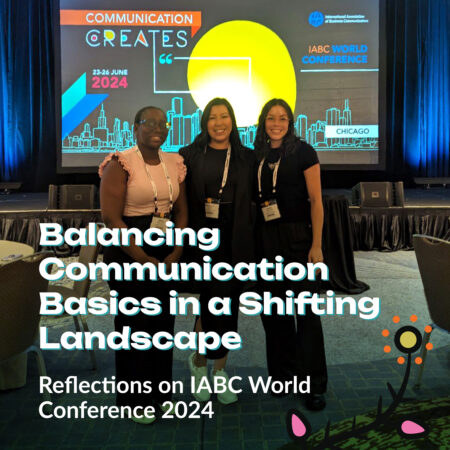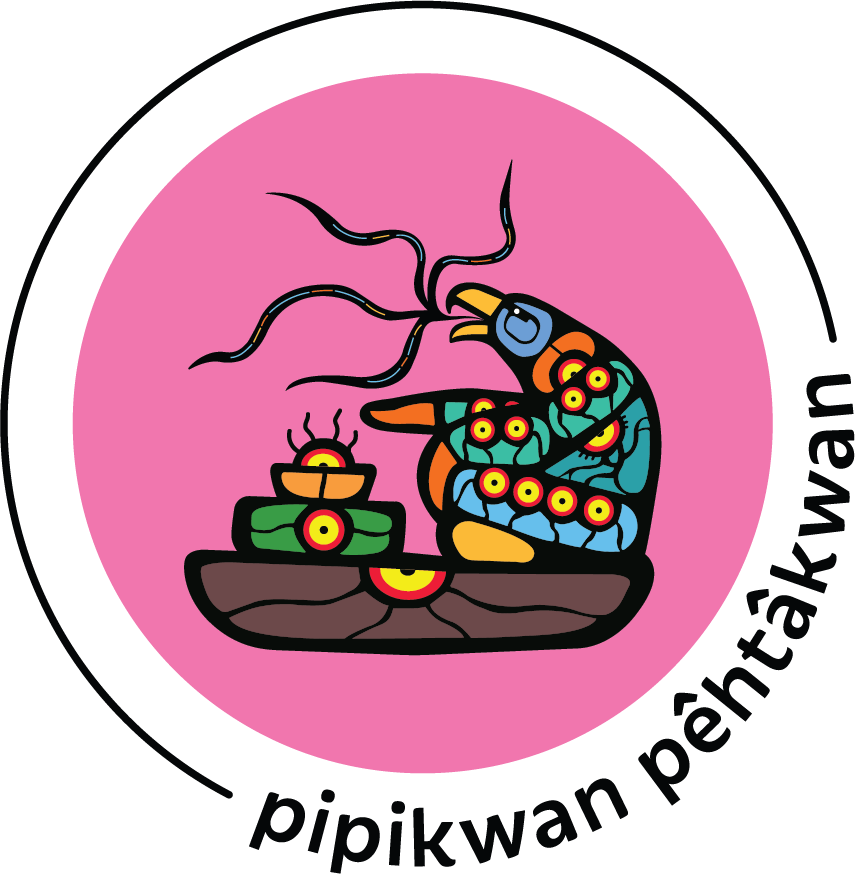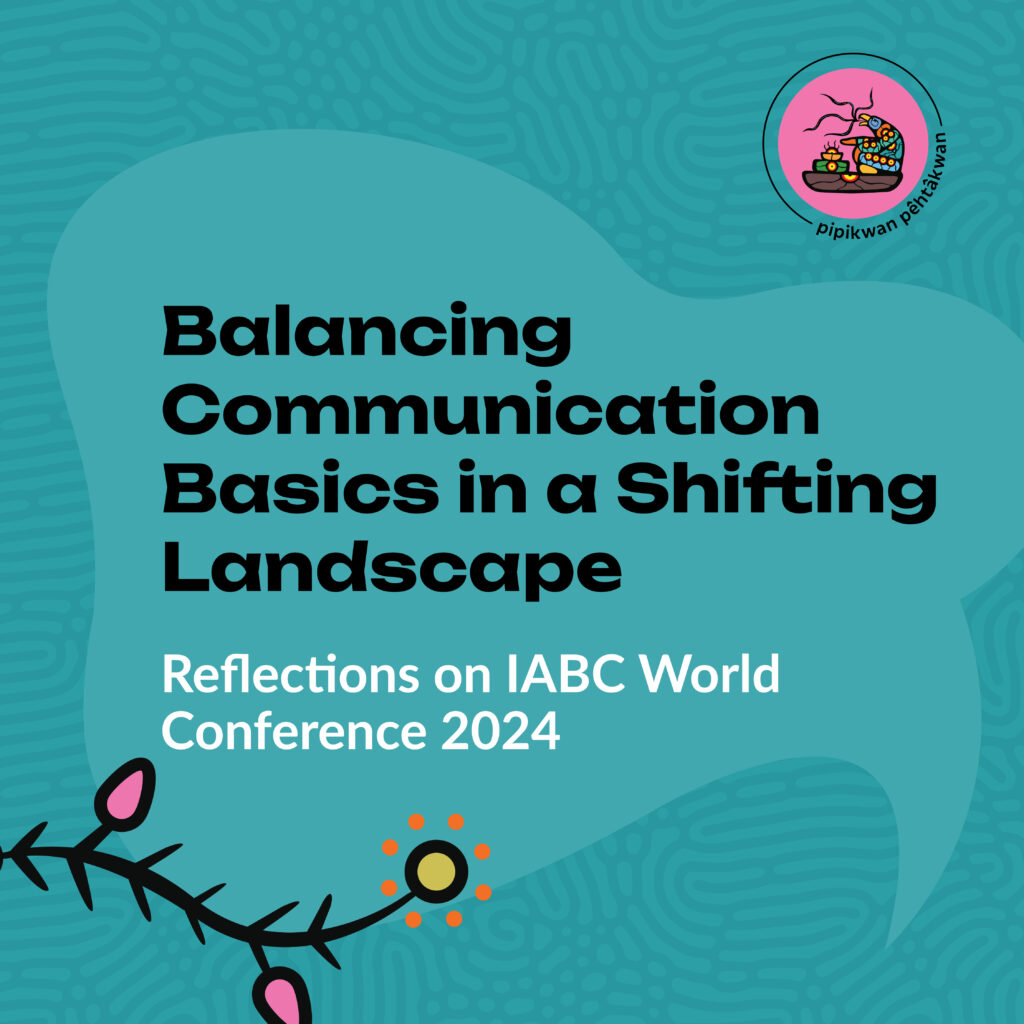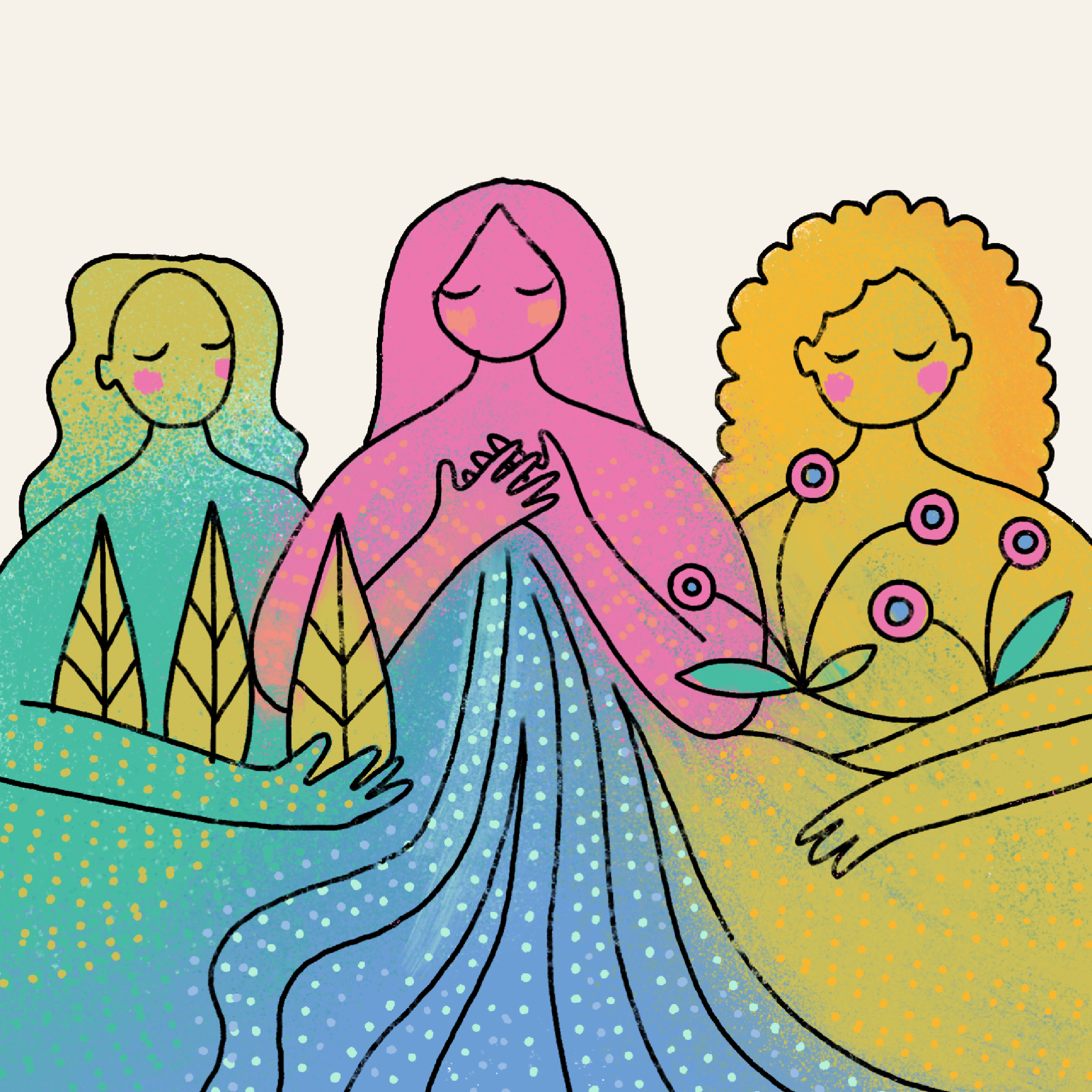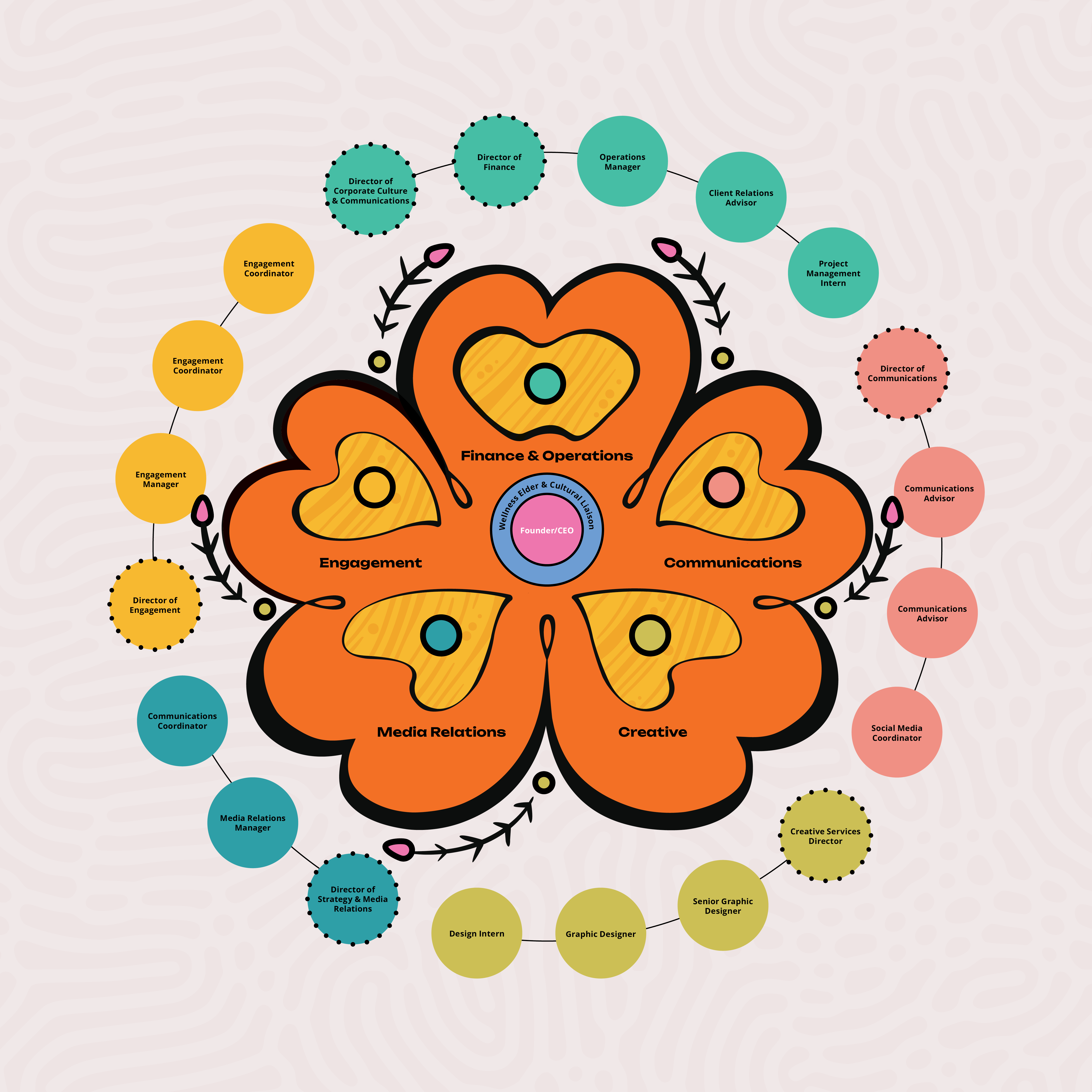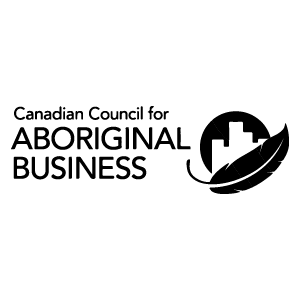Written by: Michelle Lean
Reflections on IABC World Conference 2024
As I sit in Chicago O’Hare Airport waiting to board my flight back to amiskwaciwâskihikan (Edmonton), I want to share my thoughts on key takeaways from this year’s International Association of Business Communicators (IABC) World Conference.
As most communicators know, it’s easy to get caught up in our own echo chamber, so it’s interesting to reflect on the current state of the communications industry. Writing as the Communications Director of pipikwan pêhtâkwan, I’ve found many people in our industry have come to view us as thought leaders on the Land now known as Canada. Which leads me to a hot take:
Back to basics
This year’s World Conference theme was Communication Creates and there was a heavy emphasis on the need for communications professionals to go back to the basics of communications – listening and storytelling. Oscar Munoz, the keynote speaker, who was United Airlines first Latin American CEO, spoke about his listening tour as a key to rebuilding their corporate culture.
This emphasis on listening resonated with me because it’s the approach we take as an agency, instilled in us through Indigenous Ways of Knowing and Being – we need to listen! As many Elders say, ‘we have two ears and one mouth for a reason’. As communicators, we’re always being asked for solutions (that were needed yesterday) but we must pause and listen first – it’s critical if we want our clients to be successful.
As the last keynote speaker, Julian Treasure spoke about empathy as a key element to being an effective listener in his session, Listening: The Forgotten Skill. This leads me to my next point…
Everyone loves a good story
This year’s conference was rich in storytelling and I loved it. Hearing the stories of the presenters and keynote speakers was engaging. Furthermore, many of the presentations emphasized the importance of storytelling in the work we do. A big part of my role is to help support non-Indigenous organizations build upon their understanding of Truth and Reconciliation.
It’s no surprise but it’s not easy to stand in front of an audience of 100 to 400 people and say “you need to do better.” Storytelling is a powerful tool in helping our audiences empathize and connect with our messages. We get to watch in real-time as guards drop and people start to listen – to understand. As communicators, we need to find every opportunity we can to tell stories, so we can reach our audiences effectively
We need to slow down
Similar to last year’s World Conference, a lot of the sessions were about artificial intelligence (AI) and how machine learning can help communicators. Many of the sessions also highlighted the risks of AI – from an information and privacy perspective, as well as a credibility and reputational perspective. As a communicator who supports Indigenous communities, partners, organizations and non-Indigenous clients in their awareness and understanding, I’m concerned about the cultural risks AI poses. I know I’m not the only one on my team who feels the same. Our industry isn’t addressing these risks – they don’t even seem to be on the radar.
We hear AI can be used to make our jobs easier, but we aren’t hearing how AI is a biased tool causing harm to marginalized and underrepresented peoples. We need to tread carefully.
If you are a communicator, ask yourself:
- What is the potential impact of using AI-generated writing, art and imagery on marginalized peoples who work, live and consume goods and services in your communities?
- Are the AI programs you’re using unbiased?
- Are they causing harm by taking away opportunities to support artists and writers from underrepresented groups?
- Are they perpetuating harmful stereotypes?
If you don’t know the answers, you’re not alone. I don’t have all the answers either. But it’s clear to me that from a diversity perspective – our industry doesn’t fully understand the risk of AI. Our industry’s inclination to embrace this technology with open arms without critically understanding the risks concerns me.
As communicators, it’s our responsibility to our clients and leaders as communicators to pause and evaluate the risks and that’s why we’re on a mission to involve Indigenous People in the creation of artificial intelligence to develop a critical piece of infrastructure with our perspective without furthering harm against First Peoples living in Canada.
Channeling AI for Good
Time and again, our Indigenous clients have told us how they take on additional emotional labour to educate Canadians about the history of Indigenous Peoples on this land. To support our communities, we have developed a prototype that identifies problematic statements and kindly corrects and provides factual information about Indigenous People. The AI in this platform has been educated by Indigenous Peoples and we will continue to develop the tool with Indigenous Peoples across these lands. We are excited to explore how this tool, which is named wâsikan kisewâtisiwin (meaning ‘kind electricity’ in nêhiyawêwin or Cree), can help reduce the emotional labour of Indigenous Peoples and assist non-Indigenous people in their efforts to communicate with, for and about Indigenous People.
What’s Next
As an organization, we’ve had many conversations about the ethical and cultural risks of AI. We are planning to deliver a webinar this fall sharing our concerns around AI and the impacts on marginalized and underrepresented people, particularly Indigenous Peoples and how wâsikan kisewâtisiwin utilizes AI to support inclusion. Keep your eyes peeled for more details later this summer.
That’s it! Thank you to the IABC organizers for putting together this year’s conference – it was thought-provoking and inspiring. It’s given me a refreshed perspective on our industry and the value we as communicators bring to the communities, organizations and clients we serve.
